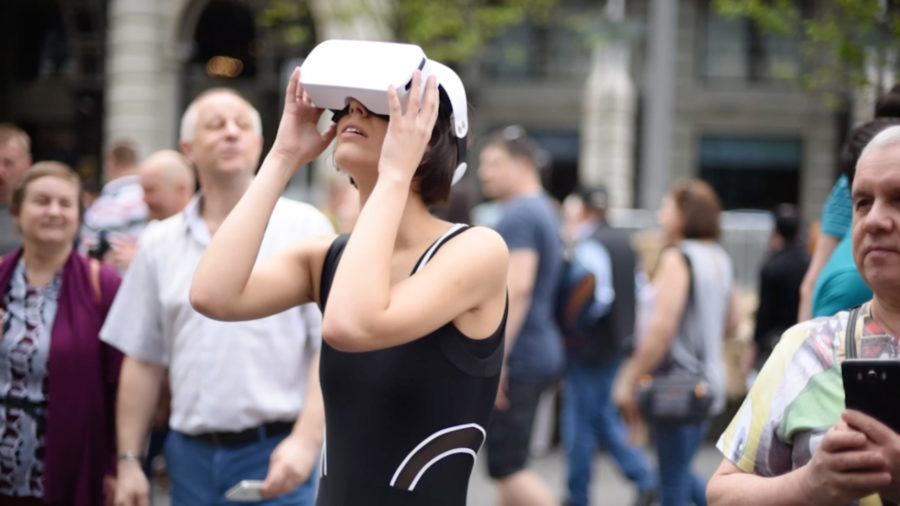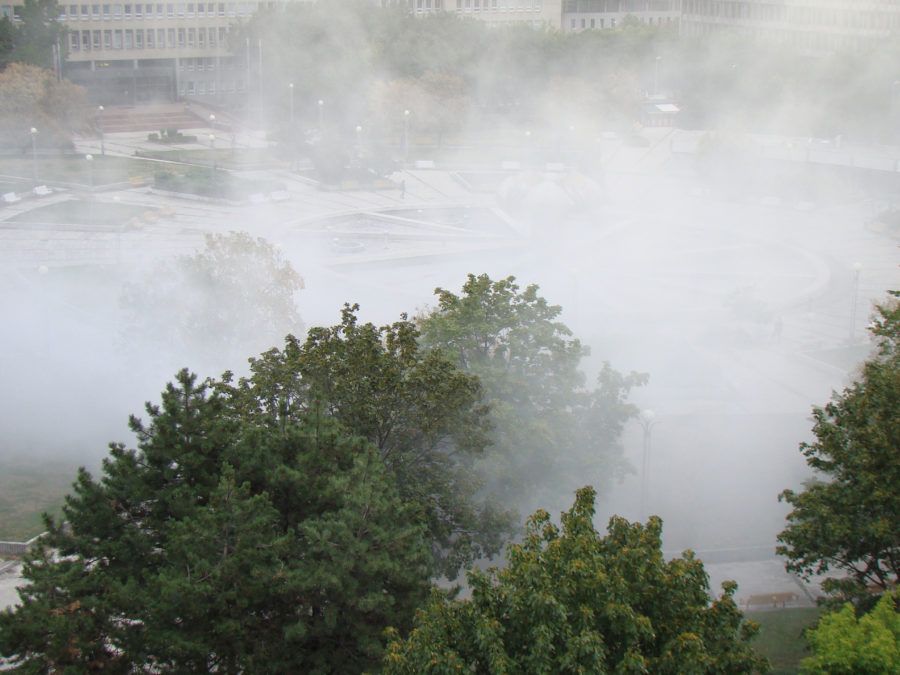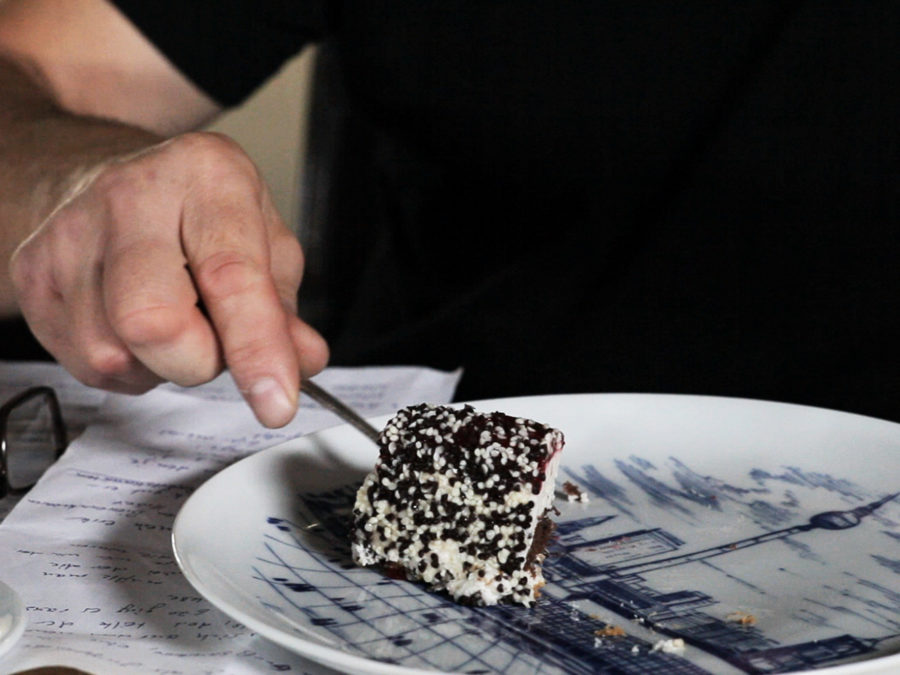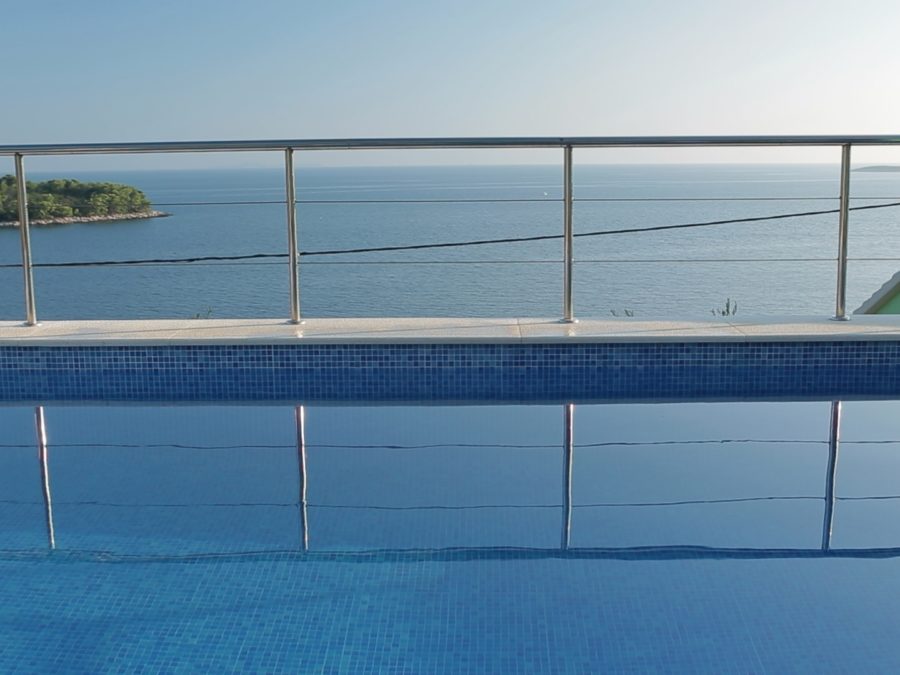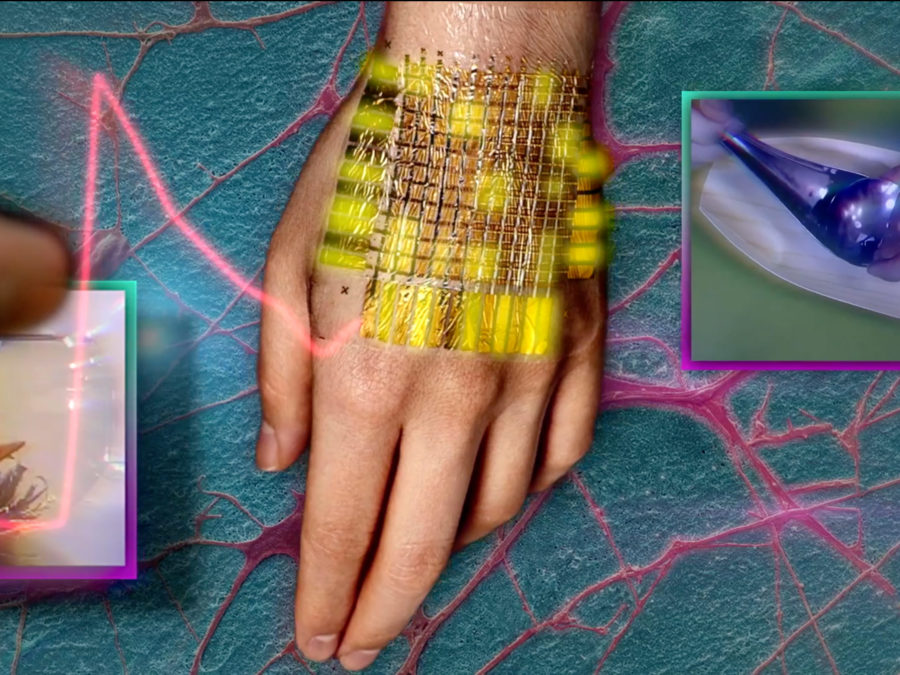Every time when I went into the city, at the moment when I began to feel helpless, bare, at the moment when my identities and space were eroding, new conditions for adaptation in it were dictated, I understood that it was necessary to look for a way out of the circle. A circle of a panoramic picture, a circle of their fears, a circle of those most erased identities. I started and continue to look for this way, between the borders there / here / and through them.
In her durational performances, Katrin Nenasheva inhabits states of alterity and disempowerment and inserts them into the rhythms of everyday life and control in Moscow’s urban landscapes and public imaginaries. Interested in the possibilities of bodily transformation and the potential of one being many, she uses her body as a site of knowledge and as a portal to connect different dimensions of time and space. Between Here and There is the third in a series of performative exercises in political corpofiction. These performances last for 21 days – the time humans take to develop a habit – or longer. Here, the artist becomes a public avatar for those subjectivities kept behind walls in the institutions of post-Soviet biopolitics.
After having inhabited the uniform of a female prisoner (Don’t Be Afraid, 2015) and the bondage of young people growing up in state orphanages (Punishment, 2016), Nehasheva based Between Here and There on her encounters and work with people living in Russia’s mental asylums. The so-called PNI (psycho-neurological wards that are specific to Russian institutional care services and still run on Soviet methods and rules) house variously disabled people. Many of these individuals face restrictions for their entire lives that prohibit them from leaving the institutions and from other forms of contact and communication. For the performance, Nenasheva collaborated with different inhabitants of a PNI to create visual representations of their lives and surroundings as well as a map of places they desire to visit in the city. Wearing a virtual reality headset that projects images from inside the PNI into her head while simultaneously blinding her from the outside, the performer enters this collaborative spatial script. Groping her way about, the instable and disrupting entity navigates places, movements, and feelings that are of a reality both dreamed and known by those who find themselves stuck in a prolonged totalitarian time.
Like a visitor from another planet, she moves with arms open and slow gestures down Tverskaya Street, where people demonstrate against the government on Russia’s national holiday; in the metro station of Moscow’s circle line; at the Soviet monument to the ‘conquerors of space’; or in Zemlyanoy Val Street, the token for Moscow’s ‘urban improvement program’; at the Zoo, which superimposes a third layer of isolation; or the Institut Serbskogo, the central institution for monitoring psychiatric diagnoses. As the performative time stretches out, Nenasheva recounts how her perceptions have become more and more similar to those described by the people inside the PNI: broken arms and legs, headaches and physical weakness, the inability to discern colors and shapes, disorientation, nausea, sudden hikes in body temperature, acute reactions to loud noises or large concentrations of people, panic attacks. The journey, also documented on her blog, leads further: to shopping malls and to encounters and conversations with the inhabitants of the Zuzino District, the location of the PNI where she was working. At the Red Square, Moscow’s central destination and main tourist attraction, a police officer arrests the performer and states: “You cannot be in the Red Square and in Virtual Reality at the same time.” Movement halts; a psychiatrist interrogates Nenasheva and subsequently sends her to a psychiatric hospital for half a day.
In the last act of the performance, a figure wearing a red dress and VR headset sits near the Russian White House, the seat of Parliament, and burns her passport. As she continues to see only inside the PNI, she cannot perceive the fire reach her fingertips. She lets the flaming symbol of the dissolution of state rights, citizenship, and freedom of movement burn itself up in her hands. In this fervent commemoration of one of the most violently suppressed protests – the people’s siege of parliament during the 1993 governmental crisis – she embeds those kept from participating in political struggles in the memory of resistance and disappearance.
Text by Suza Husse
Katrin Nenasheva is a Russian artist who works with isolated groups. Nenasheva uses different performance methods to create her own form of performance. The artist works on the street, producing long actions and always communicating with people. Her main works are Don’t be afraid (2015), The Punishment (2016), Between here and there (2018). She lives and works in Moscow.
